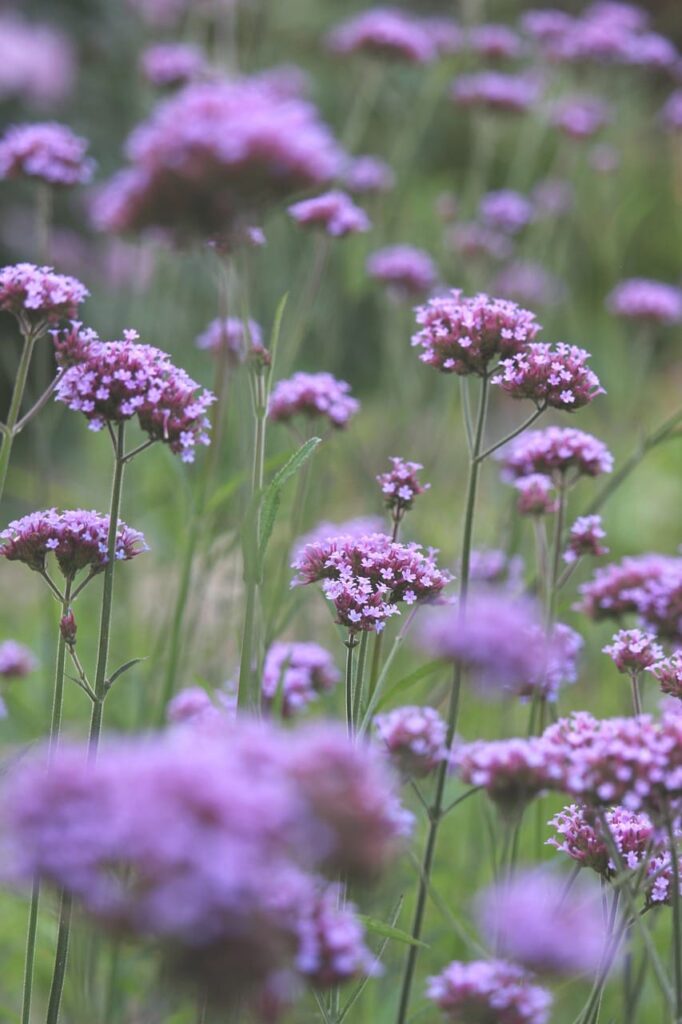

If you want to add beauty and attractiveness to your garden, little small purple flowers are an excellent choice! purple flowers not only provide a distinct beauty to outdoor places, but they also create a sense of calm and mystery in any garden arrangement. In this post,we’ll look at ten lovely little purple flowers that will bring a pop of color to your landscape and make it stand out.
The Attraction of Purple in Garden Design
Purple is generally associated with monarchy,elegance,and tranquility.Purple flowers stand out against the greens of leaves and stems when planted in gardens.The color can create thoughts of tranquility,making it an excellent choice for gardens intended for peaceful retreats.It also works well with other hues,such as yellow,white,and pink to create unique and colorful landscapes.
Low Maintenance and Adaptability
Many of these small purple flowers are low-maintenance,requiring minimal care to thrive. They adapt well to various climates, making them an ideal choice for both beginner and seasoned gardeners.
1. Violet
Violets are lovely,delicate blooms that come in a variety of colors of purple. These low-growing blossoms are ideal for ground cover, and their somewhat heart-shaped petals give a whimsical element to any landscape. Violets grow in partial shade and need well-drained soil.Regular watering promotes a healthy bloom cycle.

Sunlight:
Partial shade to full sun.
Soil:
Moist,well-drained.
Bloom Season:
Spring to early summer.
Care Tips:
Violets prefer cooler weather, so plant them in shaded areas if possible. Deadhead regularly to encourage more blooms.
2. Lavender
Lavender, a garden favorite,is noted for both its purple blossoms and its pleasant aroma. Lavender’s peaceful smell is ideal for gardeners wishing to create a relaxing environment .This plant thrives in full sun and well-drained soil,and requires little water once established. Regular pruning will promote additional flowers.

3. Verbena
Verbena is a hardy plant that thrives in hotter climes. It produces clusters of small purple flowers that bloom from spring until autumn. This flower is ideal for hanging baskets,garden beds, and borders. Verbena prefers full light and moderate watering, with deadheading to ensure ongoing blooming.
Sunlight:
Full sun.
Soil:
Well-drained
Bloom season:
Summer to early fall
Care Tips:
Regular deadheading will help verbena bloom continuously throughout the season.

4. Purple Bell-flower
Purple bell-flowers have gorgeous,bell-shaped blooms that lend elegance to any garden .It enjoys lower temperatures and partial shade,so it’s great for landscapes with dappled sunshine. Bell-flowers require steady ,moisture,so regular watering is necessary to keep them looking their best.

5. Creeping Thyme
Creeping thyme is a low-growing,fragrant ground cover that produces little purple blooms. It’s ideal for rock gardens and footpaths.
Sunlight:
Full sun.
Soil:
Well-drained,sandy rocky.
Bloom season:
mid-summer.
Care tips:
Once planted,creeping thyme is drought-tolerate.Trim after flowering to keep the form.

6. Grape Hyacinth
This early spring bloomer produces clusters of small grape-like purple blooms. Grape hyacinths bring vibrant color to any spring garden.
Sunlight:
Full sun to slight shade.
Soil:
well-drained.
Early spring flowers can be achieved by planting grape hyacinth bulbs in the fall.They multiply with time,so divide them every few years.

7. Purple Pansy
Pansies are popular because of their brilliant colors in garden design. These little,bright flowers thrives in both pots and beds and can survive colder temperatures. Pansies thrive in partial to full sunlight,and regular watering keeps their blooms fresh and vibrant.

8. Ageratum
Ageratum produces fluffy, lavender-colored clusters that shine out in any garden setting. Its tiny blossoms are perfect for edging and garden borders.
Sunlight:
Full sun to slight shade.
Soil:
Rich and well drained.
Bloom Season:
Summer is the bloom season.
Care Tips:
For best results,keep the soil evenly wet end deadhead wasted flowers.

9. Allium
With its distinctive globe-shaped blossoms and rich purple hues,this plant lends architectural appeal to any garden.
Sunlight:
Full sun.
Soil:
well-drained.
Bloom Season:
Late spring to early summer.
Care Tips:
Plant Allium bulbs in the fall and avoid over watering because they prefer drier conditions once established.

10. Cat-mint
Cat-mint has a beautiful lavender-purple blossoms on long, arching stems.It is noted for its hardiness and gorgeous blossoms, which appeal to both humans and pollinators.
Sunlight:
Full sun to slight shade.
Soil:
well-drained.
Bloom Season:
Early summer until October.
Care Tips:
Cat-mint is drought-tolerate and requires little maintenance. prune it after the initial bloom to promote a second wave.

How to select the best small purple Flowers for your garden
When choosing small purple flowers for your garden,consider climate,sunlight, and soil type. If you reside in a hotter climate, heat-tolerate cultivars like as verbena or lavender may be ideal. Violet are ideal for shady areas.
Care for smell purple Flowers
While each flower has different requirements,many small purple flowers thrive with regular watering,well-drained soil, and occasional trimming. Avoid over watering, since excess moisture can cause root rot. Deadheading old blooms can also promote new growth, keeping your garden appearing vibrant and alive.
Conclusion:
Adding small purple flowers to your garden will turn it into a peaceful and welcoming environment. With options ranging from scented lavender to colorful violets,there is purple flower to suit every garden style . Experiment with different types to create a visually appealing garden that attracts pollinators and elevates your outdoor space.
